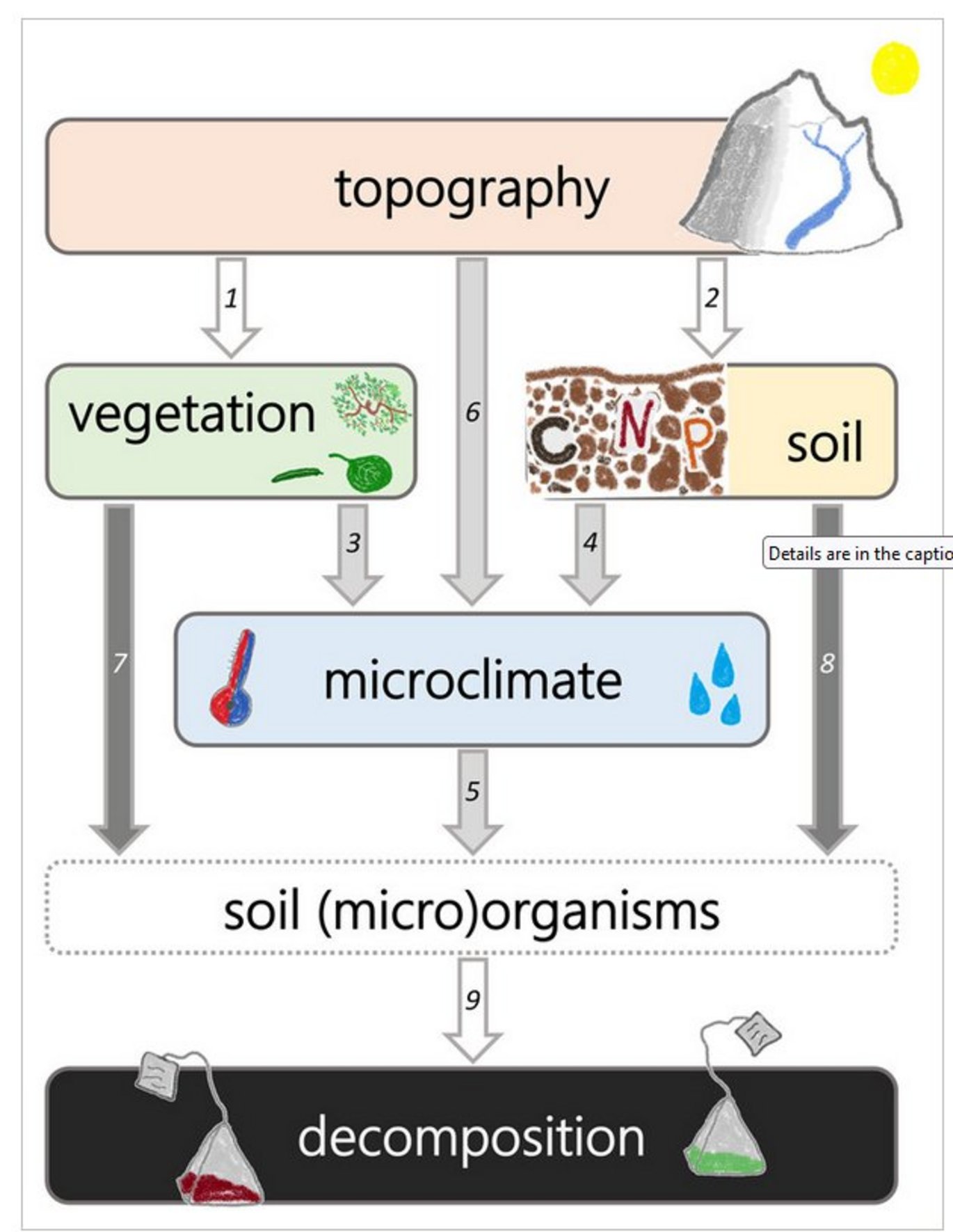Microclimate explains little variation in year-round decomposition across an Arctic tundra landscape
New publication by Jonathan von Oppen, Jakob J. Assmann, Anne D. Bjorkman, Urs A. Treier, Bo Elberling, Signe Normand.

Abstract:
Litter decomposition represents a major path for atmospheric carbon influx into Arctic soils, thereby controlling below-ground carbon accumulation. Yet, little is known about how tundra litter decomposition varies with microenvironmental conditions, hindering accurate projections of tundra soil carbon dynamics with future climate change. Over 14 months, we measured landscape-scale decomposition of two contrasting standard litter types (Green tea and Rooibos tea) in 90 plots covering gradients of micro-climate and -topography, vegetation cover and traits, and soil characteristics in Western Greenland. We used the tea bag index (TBI) protocol to estimate relative variation in litter mass loss, decomposition rate (k) and stabilisation factor (S) across space, and structural equation modelling (SEM) to identify relationships among environmental factors and decomposition. Contrasting our expectations, microenvironmental factors explained little of the observed variation in both litter mass loss, as well as k and S, suggesting that the variables included in our study were not the major controls of decomposer activity in the soil across the studied tundra landscape. We use these unexpected findings of our study combined with findings from the current literature to discuss future avenues for improving our understanding of the drivers of tundra decomposition and, ultimately, carbon cycling across the warming Arctic.
